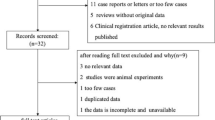Abstract
Background
Recurrent ptosis is a common sequel of mastopexy. The use of mesh as an adjunct to the double-skin technique was developed to reduce the incidence of recurrent ptosis. The optimal mesh needs to strike the right balance between persistence, inflammation, biocompatibility, and incorporation without interfering with mammography or presenting a long-term infection risk. This study investigated the ability of a biologic tissue matrix, FortaPerm, to achieve these goals.
Methods
Women undergoing mastopexy were enrolled in this prospective observational study. The study participants were evaluated at multiple time points for 5 years. Efficacy was assessed primarily by photographic evaluation and secondarily by mammography, patient and physician global assessments, and patient pain assessments.
Results
Five women ages 17–41 years were enrolled in this study. At 12 months, 80% of the patients (4/5), and at 5 years, 66% of the patients (2/3) had no asymmetry or ptosis. Mammographic evaluation of the breasts was not affected by the presence of the FortaPerm, and there were no abnormal findings. In two patients, FortaPerm was associated with bilateral seromas associated with extrusion of small amounts of the FortaPerm material in the absence of surrounding inflammation.
Conclusions
FortaPerm achieved excellent initial aesthetic outcomes and long-term maintenance of the breast position with no evidence of ptosis 5 years postoperatively for a majority of the patients. FortaPerm did not interfere with mammography, presented no long-term safety concerns, and produced satisfactory results for all patients relative to appearance of the scar as well as shape and firmness of the breasts.







Similar content being viewed by others
References
Goes JCS (1996) Periareolar mammaplasty: double-skin technique with application of polyglactine or mixed mesh. Plast Reconstr Surg 97:959
Goes JCS, Landecker A, Lyra EC et al (2004) The application of mesh support in periareolar breast surgery: clinical and mammographic evaluation. Aesth Plast Surg 28:268
Goes JCS (1989) Periareolar mammaplasty: double-skin technique. Rev Soc Bras Cir Plas 4:55
Goes JCS (1992) Periareolar mammaplasty: double-skin technique with application of polyglactine 910 mesh. Rev Soc Bras Cir Plas 7:1
Goes JCS (2002) Periareolar mammaplasty: double-skin technique with application of mesh. Clin Plastic Surg 29:349
Goes JCS (2005) Periareolar mammaplasty: double-skin technique with application of mesh support. In: Spear SL, Willey SC, Robb GL, Hammond DC, Nahabedian MY II (eds) Surgery of the breast. Principles and art. Lippincott Williams & Wilkins, Philadelphia
Spear SL, Low M, Ducic I (2003) Revision augmentation mastopexy: indications, operations, and outcomes. Ann Plast Surg 51:540
Barber FA, Herbert MA, Coons DA (2006) Tendon augmentation grafts: biomechanical failure loads and failure patterns. Arthroscopy 22:534
Derwin KA, Baker AR, Spragg RK et al (2006) Commercial extracellular matrix scaffolds for rotator cuff tendon repair: biomechanical, biochemical, and cellular properties. J Bone Joint Surg Am 88:2665
Mullen MJ, Hildick-Smith D, De Giovanni JV et al (2006) BioSTAR Evaluation STudy (BEST): a prospective, multicenter, phase I clinical trial to evaluate the feasibility, efficacy, and safety of the BioSTAR bioabsorbable septal repair implant for the closure of atrial-level shunts. Circulation 114:1962
Gustilo-Ashby AM, Paraiso MF, Jelovsek JE et al (2007) Bowel symptoms 1 year after surgery for prolapse: further analysis of a randomized trial of rectocele repair. Am J Obstet Gynecol 197:76e1
Paraiso MF, Barber MD, Muir TW et al (2006) Rectocele repair: a randomized trial of three surgical techniques including graft augmentation. Am J Obstet Gynecol 195:1762
Abraham GA, Murray J, Billiar K et al (2000) Evaluation of the porcine intestinal collagen layer as a biomaterial. J Biomed Mater Res 51:442
Hardin-Young J, Carr RM, Downing GJ et al (1996) Modification of native collagen reduces antigenicity but preserves cell compatibility. Biotechnol Bioeng 49:675
Organogenesis data on file. Canton, MA
Bieri D, Reeve RA, Champion GD et al (1990) The FACES pain scale for the self-assessment of the severity of pain experienced by children: development, initial validation, and preliminary investigation for ratio scale properties. Pain 41:139
Hall-Findlay EJ (1999) A simplified vertical reduction mammaplasty: shortening the learning curve. Plast Reconstr Surg 104:748
Lejour M (1994) Vertical mammaplasty and liposuction of the breast. Plast Reconstr Surg 94:100
McKissock PK (1972) Reduction mammaplasty with a vertical dermal flap. Plast Reconstr Surg 49:245
Peixoto G (1980) Reduction mammaplasty: a personal technique. Plast Reconstr Surg 65:217
Regnault P (1974) Reduction mammaplasty by the “B” technique. Plast Reconstr Surg 53:19
Robbins TH (1984) Inferior pedicle breast reduction technique. Plast Reconstr Surg 73:325
Goldenberg A, Matone J, Marcondes W et al (2005) Comparative study of inflammatory response and adhesions formation after fixation of different meshes for inguinal hernia repair in rabbits. Acta Cir Bras 20:347
Klinge U, Klosterhalfen B, Muller M et al (1999) Influence of polyglactin-coating on functional and morphological parameters of polypropylene-mesh modifications for abdominal wall repair. Biomaterials 20:613
Rosch R, Junge K, Schachtrupp A et al (2003) Mesh implants in hernia repair. Inflammatory cell response in a rat model. Eur Surg Res 35:161
Scheidbach H, Tamme C, Tannapfel A et al (2004) In vivo studies comparing the biocompatibility of various polypropylene meshes and their handling properties during endoscopic total extraperitoneal (TEP) patchplasty: an experimental study in pigs. Surg Endosc 18:211
Harrell AG, Novitsky YW, Kercher KW et al (2006) In vitro infectability of prosthetic mesh by methicillin-resistant Staphylococcus aureus. Hernia 10:120
Bellows CF, Alder A, Helton WS (2006) Abdominal wall reconstruction using biological tissue grafts: present status and future opportunities. Expert Rev Med Devices 3:657–675
Author information
Authors and Affiliations
Corresponding author
Rights and permissions
About this article
Cite this article
Goes, J.C.S., Bates, D. Periareolar Mastopexy with FortaPerm. Aesth Plast Surg 34, 350–358 (2010). https://doi.org/10.1007/s00266-009-9462-5
Received:
Accepted:
Published:
Issue Date:
DOI: https://doi.org/10.1007/s00266-009-9462-5




